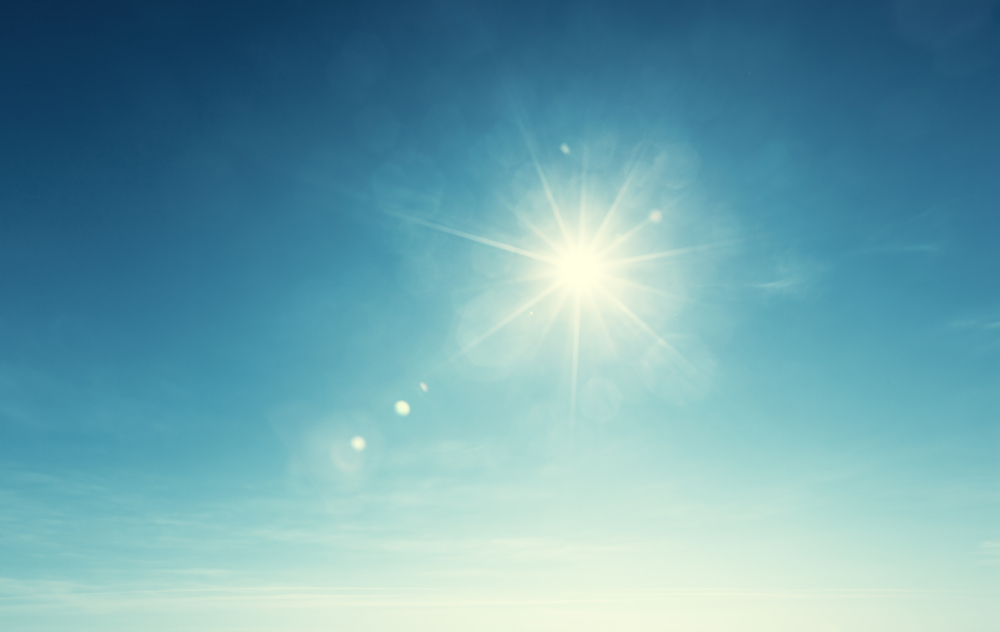
How often have you purchased a potted nursery plant...
or packet of seeds and read the instructions to plant in full sun. You eagerly wait for flowers or fruit, but your plants seem to wither away in the sun. You think you have a black thumb and can’t grow anything. If this story sounds familiar, you should know you do not have a black thumb. It is an untrained thumb and you will soon be on your way to having a green desert thumb.
Here is what really happened
Growing instructions for plants do not take the desert climates into consideration. They are printed with more temperate summers in mind. As desert gardeners, we need to learn how to interpret these instructions differently for our environment.
Most plants with tags that say FULL SUN will require morning sun and afternoon shade or even consistent shade all day. The same can be said for some trees. To further clarify, morning sun is only until noon. During the summer months, the sun rises very early and temperatures are already easily 85 degrees at 6am. By noon, temperatures are well into the high nineties. The UV levels are also high, causing serious stress to plants, which can damage plant DNA, proteins and cell structures. When considering what to plant during our summers, it is important to be aware of this information.
FACTORS AFFECTING PLANTS IN THE SUMMER
Extreme temperatures
There’s a saying here in the desert, 100 days over 100 degrees. That is brutal to even think about! However, we deal with it every summer and our gardens need to as well. The high temperatures mean higher ambient temperatures, especially for plants close to buildings, or in pots that are on concrete or rock. These surfaces absorb all heat and retain it even in the evenings. Additionally, the leaves of plants are subject to heat bearing down on them. It can easily scorch leaves and eventually kill a plant. Our night time temperatures offer no relief to plants either, while the hot sun is not bearing down on them, temperatures are still above 85 degrees from late June into September. There may be some relief days if Monsoon storms cause a drop in temperatures in July and August.
Humidity
The lack of humidity in the air and lack of rain from May until around July or August further worsens the effects of the temperatures for plants.
Since the air is so dry, transpiration occurs much faster and often plants cannot move water from the roots to the leaves fast enough to cope with the temperatures. This can dry out plants causing irreversible damage if they do not get moisture in time.
Wind
We experience several really hot and drying winds in the summer. This year (2019) we are seeing this start even earlier. April had several dry winds with temperatures well into the higher nineties.
This hot wind dries out plants even faster – they lose more moisture through the leaves than normal. Wind can also cause wind burn to the leaves and trunk, misshapen leaves, and scarred fruit.
How to decrease Temperatures by Creating Microclimates
As a desert gardener, creating your summer microclimate will involve ways to decrease temperatures according to your plant needs. Our best ideas for decreasing temps are as follows:
1. Increase Humidity
Adding a source of humidity or employing methods to conserve moisture will greatly help plants in the extreme heat.
Ponds
Ponds moderate temperatures in both Summer and winter. In summer they work as natural evaporative coolers. As hot air moves over the pond, it is cooled, and as a result cools the area around the pond. Danelle Wolford, from Weed ‘Em and Reap, has a very large swimming pond in her backyard. “It definitely brings up the humidity and cools down the area.” They are in the process of adding more plants and shrubs to the area to further trap the humidity.
Visit Weed ‘Em and Reap at their website or their YouTube channel to learn more about their pond and farm.

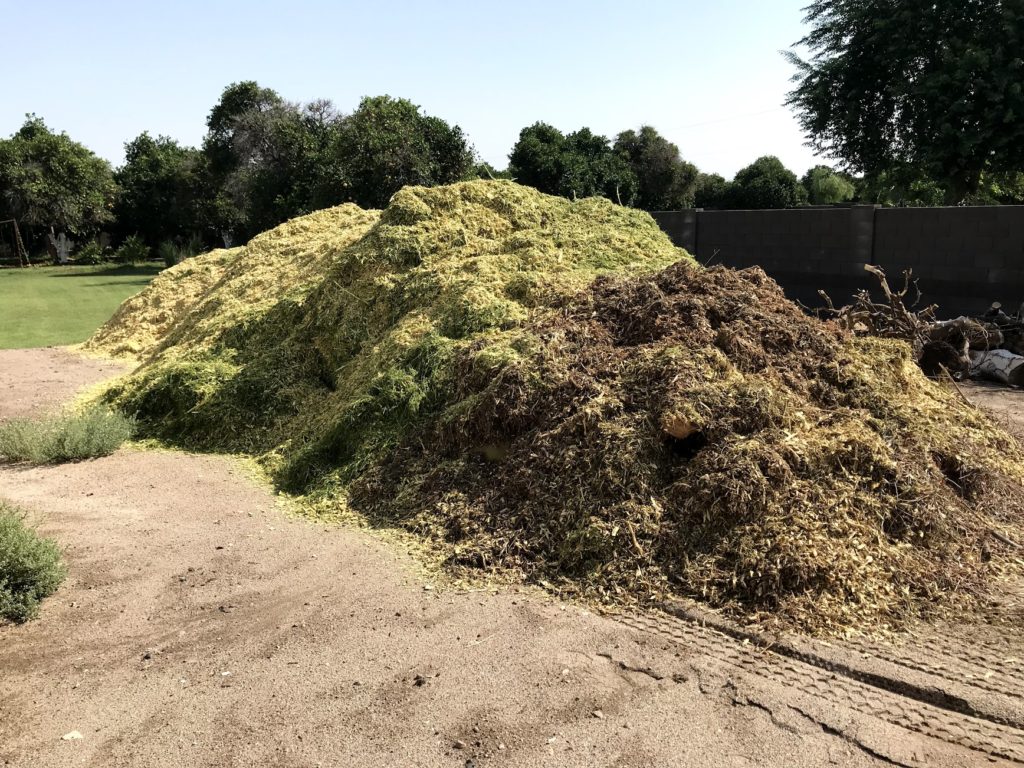
Mulch
A 3-inch layer of wood chips as a mulch will help to protect soils from the hot sun, lessening the evaporation of moisture from the soil. Plant roots and soil life will be cooler minimizing heat stress on the plants. Using a living mulch is also an option that does double duty in the garden. While keeping the ground cool, it can also be a food source or green manure. Purselane is a good living mulch to use, that also doubles as a healthy green vegetable.
Plant Close Together
Planting densely will also shade soils, maintain humidity around the foliage, and help plants protect each other from the drying effect of our climate.
Misters
As we write this we are experimenting with misters as an effective cooling device in the backyard garden. We believe proximity to plants is important. Additionally, we are considering our hard water and the effect that it has on the leaves and the misting system itself.
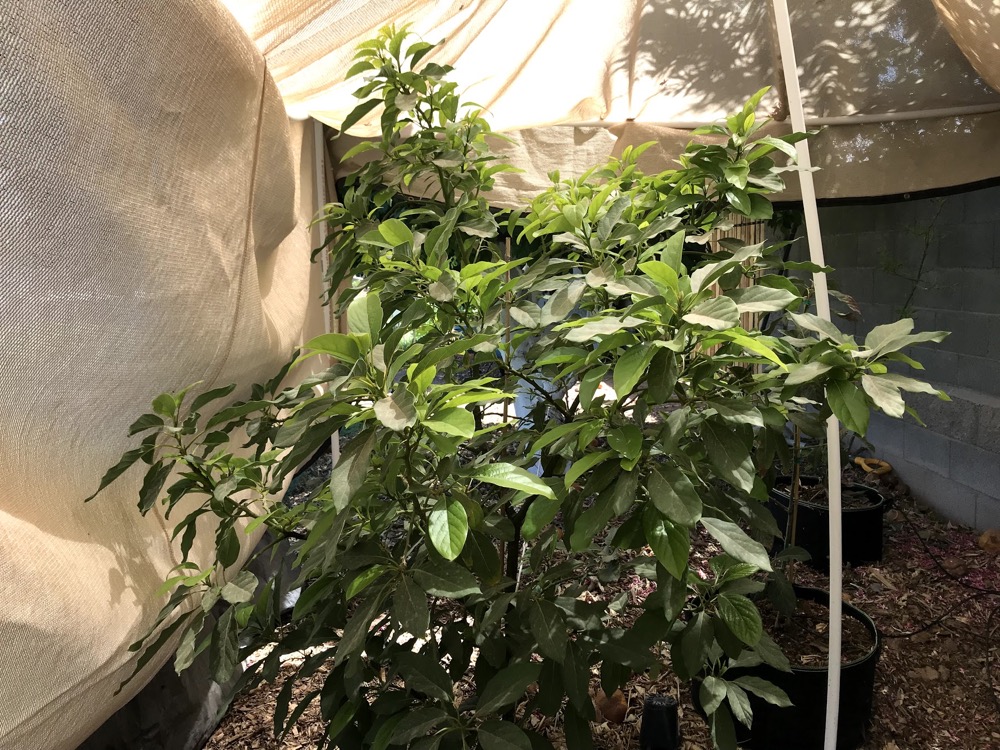
2. Use Shade Cloth
The big question is always, “What percentage of shade cloth should I use?” There is no correct answer to this. Typically 30%-50% is mostly what is used. However, some plants like avocados require about 70% shade cloth until they are more mature. The absolute best option when looking at shade cloth is to get aluminet which reflects UV and greatly reduces stress on plants. When deciding what percentage is right for your garden, take into account the conditions you have: Is it full south sun all summer long? Is there reflective heat that affects that area, such as from nearby walls or rock/concrete below the plants? What plants are you growing and what kind of conditions do they need?
Also, it is important to think about how to sturdily you should secure your shade cloth since monsoon winds will blow your structures away if they are not secured properly. Shade cloth with prefabricated rope at the corners or reinforced grommets along the edges works well if the entire shade cloth is not attached around the perimeter to a sturdy structure and edges can flap in the wind. Using zip ties (UV protected) along a hoop house worked very well at Solitary Bee Gardens. See more below.
3. Use Walls and Fences
Wall and fences can work as wind blocks to protect plants from the hot dry winds, but also cast shadows/create shade to work for your microclimate. Additionally, consider the color of the wall. In the book, “Gaia’s Garden,” we learn that dark walls will absorb heat, while light/white ones reflect heat. Researches studied the effects of growing peaches against both walls. Those grown against the dark wall did grow faster but did not ripen any earlier. However, those grown against the light wall had a heavier fruit set that also ripened earlier. Having earlier fruit set could be beneficial to the desert gardener to prevent fruit from being compromised in the high temperatures of summer. However, do not use stark white – the effects will be similar to snow blinding. Use light tans or yellows.
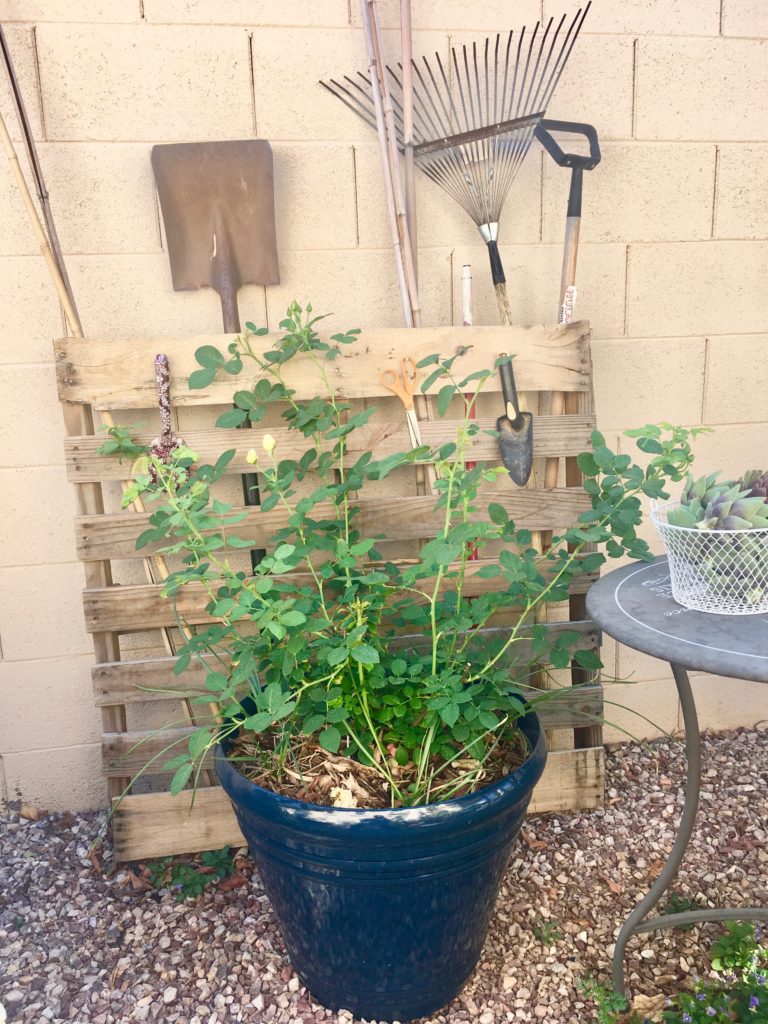
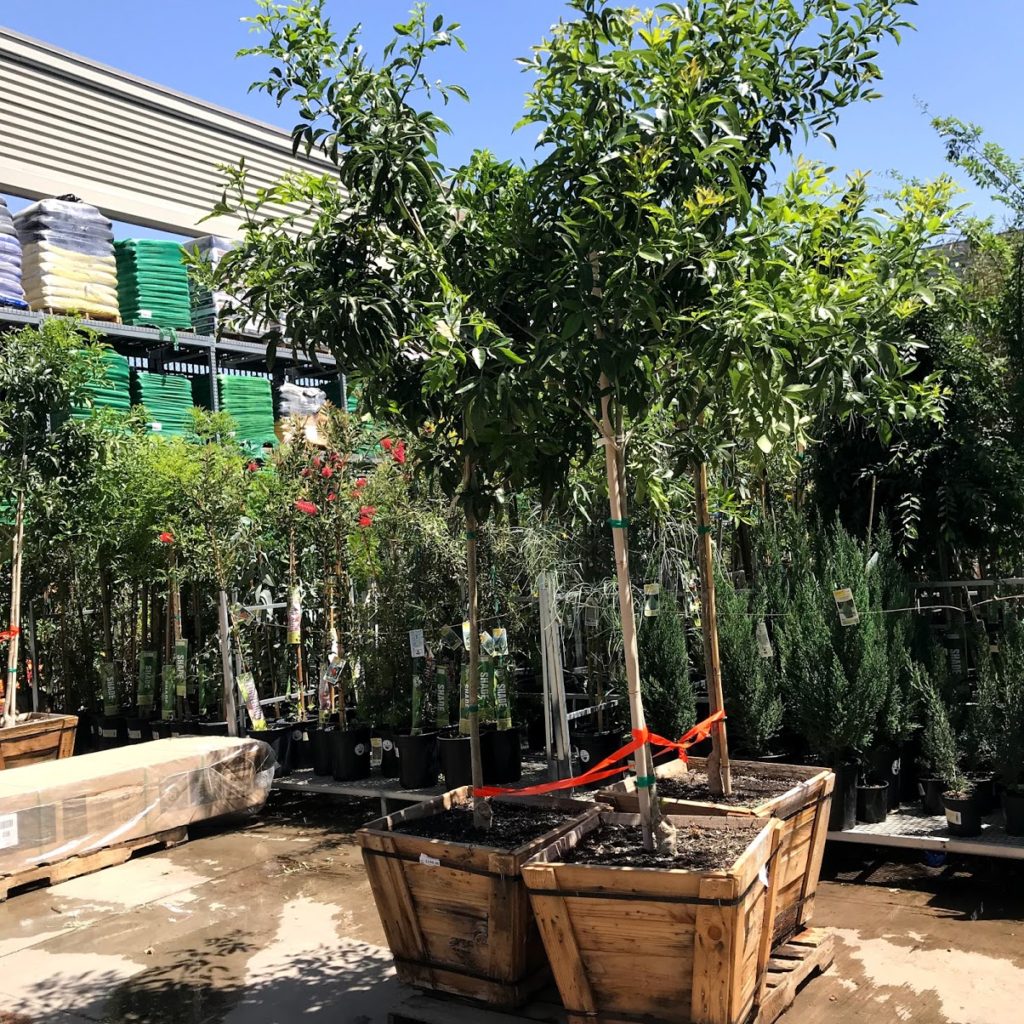
4. Plant Trees
There is benefit to using both evergreen and deciduous trees for creating microclimates. During summer, tree canopies shade the ground keeping it cooler and greatly reducing the temperatures below the tree canopy. For example, the back corner at Ardenelli farms is covered by several mature citrus trees which trap moisture, shade sensitive plants below, and keep the temperature 20-30 degrees cooler than out in the open sun.
Both evergreens and deciduous trees will provide great shade in the summer. In winter, deciduous trees will let in more sunlight and help heat up trees during the day and the thick canopy of evergreens trees act as a heat blanket trapping in heat and preventing warm air from rising. The thick canopy can also prevent frost damage. We mention several trees for creating microclimates in our initial blog on microclimates.
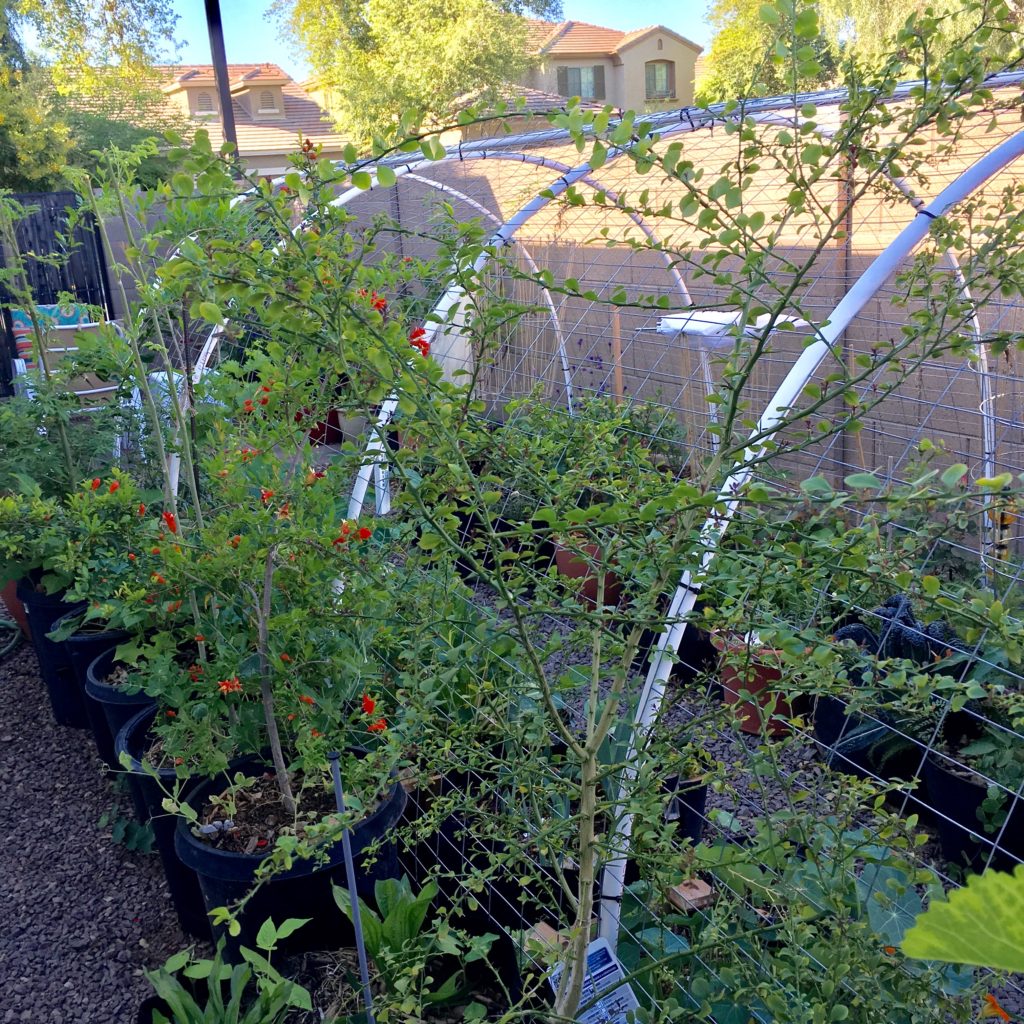
5. Make a Hoop House Structure
During the second gardening season at Solitary Bee Gardens, I made a hoop house to help my garden through the summer, I worked very well and was easy to make. This was at my previous residence and I no longer have one.
Materials
- Pvc pipe 1 inches thick 20ft long with a bell end (Lowe’s or Home Depot)
- 2ft rebar, 2 for each piece of PVC pipe (Lowe’s or Home Depot)
- Galvanized wire fencing
- Wire cutters
- Shade cloth
- Zip ties (high quality, UV protected)
- Hammer
- A friend
I (Ayshica) was able to make this structure by myself, however, the help of a friend will make things go a lot faster. If you reside in an HOA, check the HOA rules and regulations for height restrictions of structures in your backyard, before you start building this.
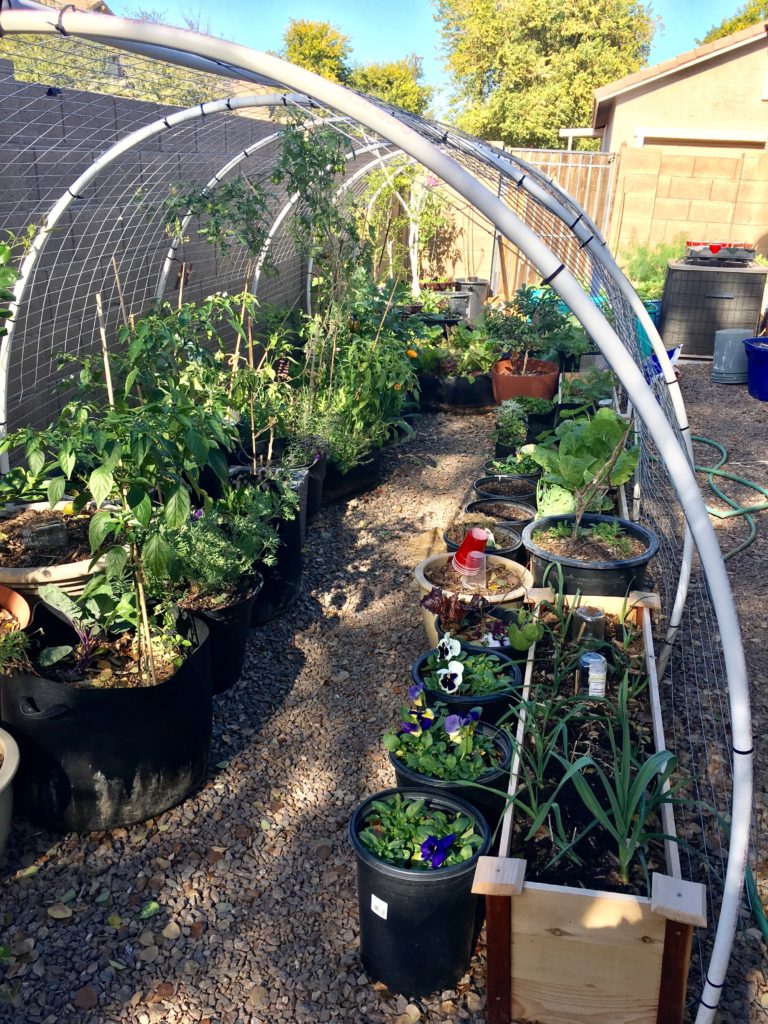
- First, figure out how long you want the structure to be, keeping in mind that you will space each hoop 4ft apart. For example, I built mine to be 12-feet long initially. I needed 4 pieces of PVC piping for that. You will also need one extra piece of PVC to use across the top to help stabilize the structure. The beauty of this design is that you can easily add more length later if you wish.
- Mark out the area you want to build the hoop house in. Once you know how long you want it to be you can calculate how many pieces of PVC you will need and how many pieces of rebar. I had the PVC cut to 15ft, which I felt just barely gave me enough headroom, I recommend you keep it at 20ft if possible, or only have it cut 2-3 inches less that 20ft.
- Next place you first rebar stake in the ground. Put the one end of the PVC in and get someone to help you bend it with it’s natural bend across, making your first hoop. You may want to force it a little closer to create a taller structure with less width, but make sure it will accommodate your height. Mark this area where the other rebar stake should go.
- Once you hammer the second stake in, place the PVC over both rebar stakes to ensure the hoop formed, is the width and height that best suits you. If not, you could move the rebar and manipulate the PVC to accommodate you.
- Mark out and secure the rest of the rebar stakes making sure they are equally 4ft away from each other along the length of the structure. This is because the fencing wire is 4ft in width, and will fit perfectly between two pieces of rebar. Also, make sure that they are all perfectly straight and aligned with each other.
- Next you will want to place all the PVC pipes in place over the rebar stakes.
- At this point you could join up all the cut pieces to run across the length of the hoop house at the top center point of the hoops, or you could use the additional piece of PVC purchased. Secure with zips ties. It will not feel very sturdy or solid as yet, but the addition of the galvanized wire will change that.
- It’s time to add the galvanized wire. You will carefully drape it over the PVC between 2 hoops, to measure the correct length to cut. Then undrape and cut that length of fencing.
- Cut the remaining needed pieces to exactly the same size. Drape one piece on at a time and secure with more zip ties until you have completely covered the hoop in fencing. By this time it should feel very secure.
- Finally, add the shade cloth. I cut to the same measurements as the fencing wire. I also secured this with zip ties and did not use grommets. The zip ties were still very secure and in good shape after a year, mostly I think because they are essentially also protected by the shade cloth. I threaded them through the weave of the shade cloth, to hold the cloth in place and then tightened them. The ends were snipped off leaving a small tag that was not really visible.
Your hoop house is now ready for summer growing!
In October, I removed the shade cloth, the trellis works great for peas and pole beans at this point. In winter a frost cloth can be used to protect plants from the colder temperatures.
ADDITIONAL WAYS TO SHADE PLANTS
Large
Umbrellas
Large umbrellas work well tilted to screen plants from the West Sun.
There are usually great deals on umbrellas at Amazon, Lowe’s or at Costco.
At Solitary Bee Gardens, this has been used to protect roses, potted trees, and tomatoes.
Burlap
Burlap is an inexpensive and quick option for temporary screening.
The open weave allows for dappled shape.
They would work well attached to some supports to shade tomatoes, squashes, and other veggies during the hot summer months.
Mini Photography Umbrellas
This seems like an unusual idea but it works brilliantly since their purpose is to filter the sun. Use to shade strawberry beds, arugula, young seedlings, and more. They will blow off in strong winds, so secure well in the ground. The sun is harsh and will not be kind to them, they last a season or two before they will need to be replaced. They also work to keep off frosts from crops like lettuce in the winter
PLANTS THAT CAN HANDLE THE FULL DESERT SUN
Trees
Citrus
Pomegranates
Figs
Peaches
Apples
All of these trees will need some afternoon shade for the first year.
Vegetables
Eggplant
Okra
Corn
Melons
Squash
Peppers
Won’t produce when temps
are about 95F degrees
Amaranth
Herbs & Flowers
Garlic Chives
Basils, all varieties
Rosemary
Lavender
Zinnia
Vinca
Sunflowers
Great Trees for Microclimates
We’ve written a whole article on great trees for creating microclimates in our climate, and we’re constantly updating it!

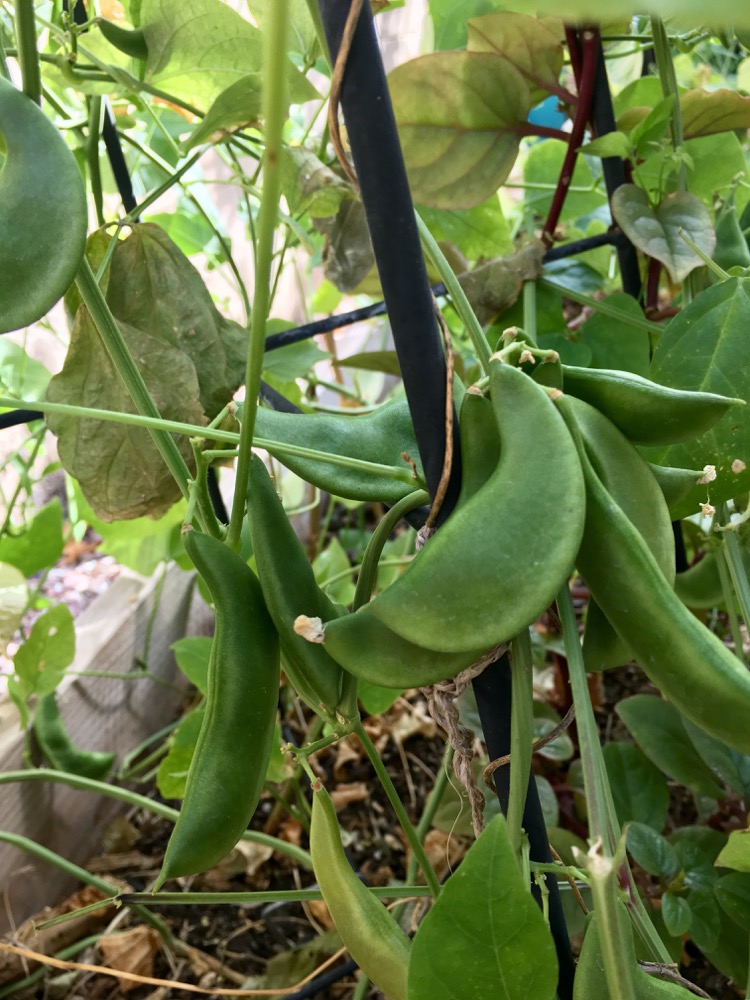
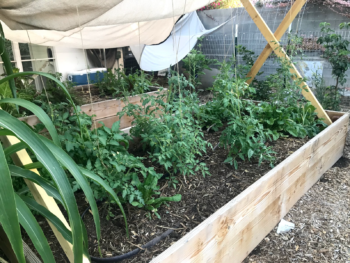
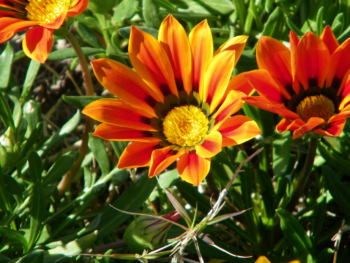
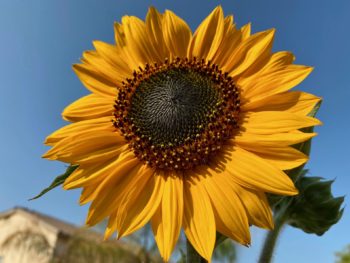
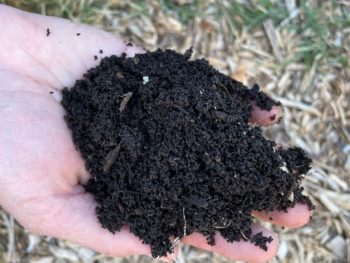
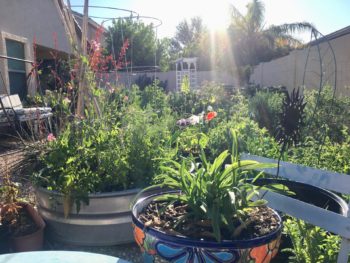
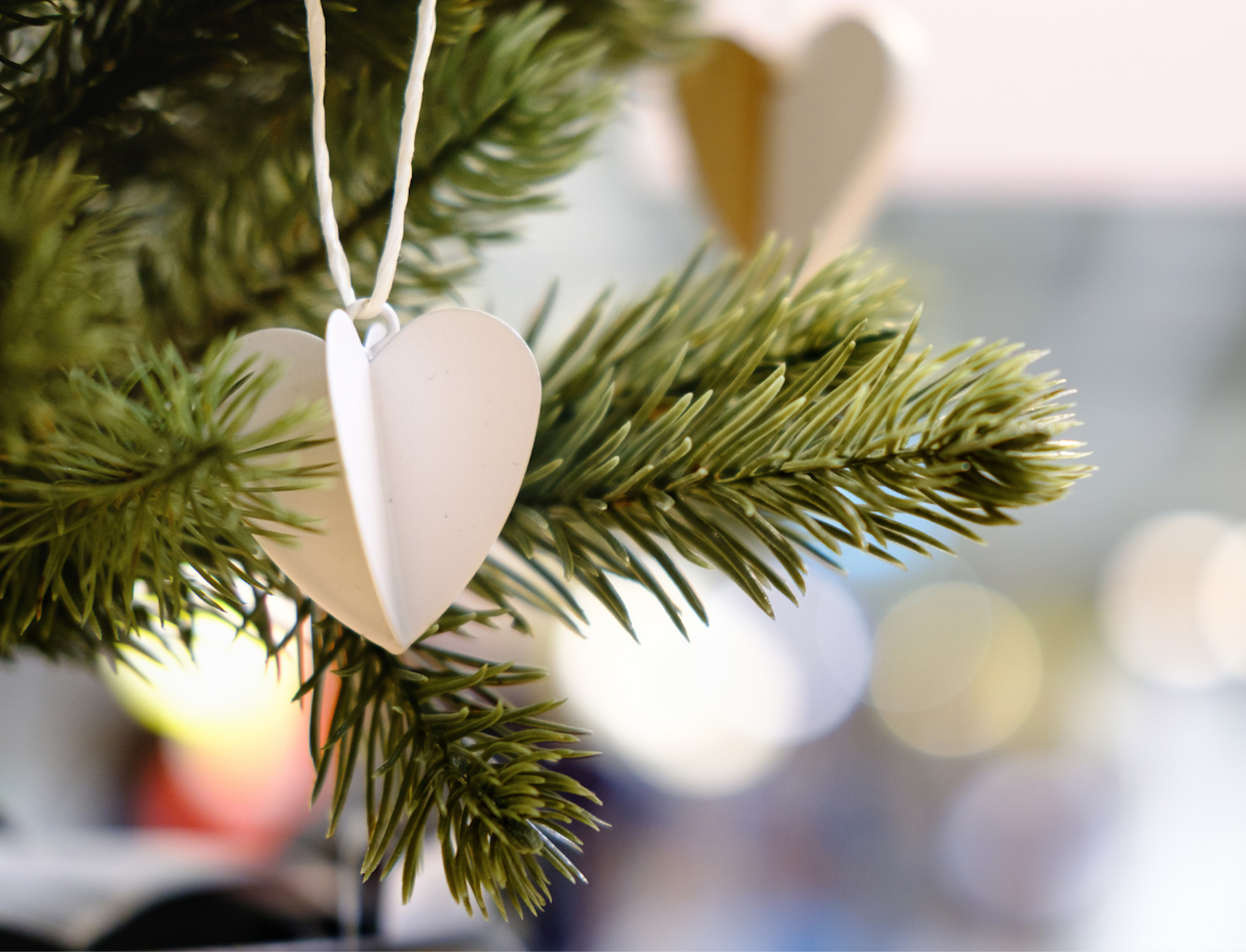
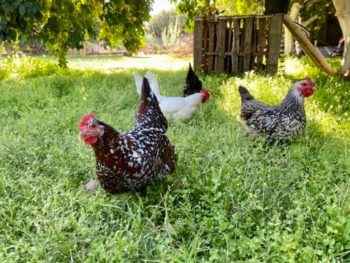
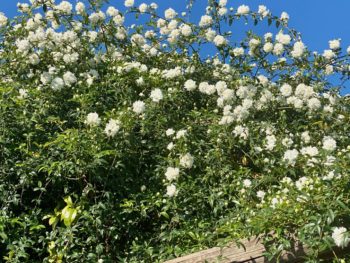
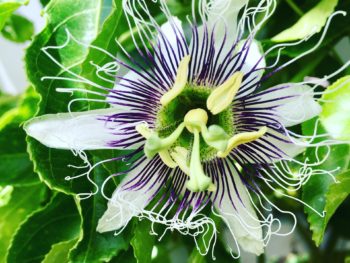
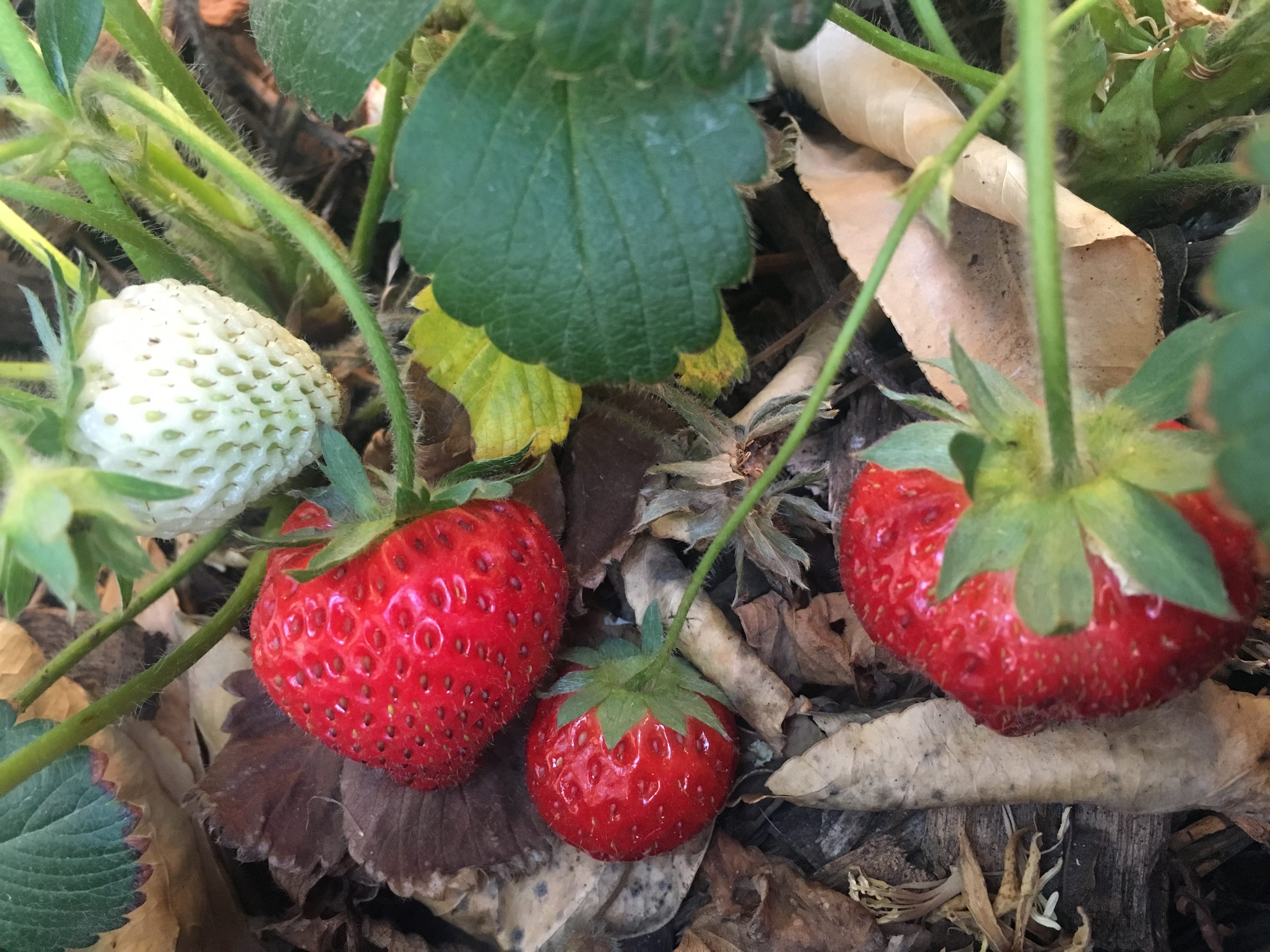 How to Grow Strawberries in Phoenix
How to Grow Strawberries in Phoenix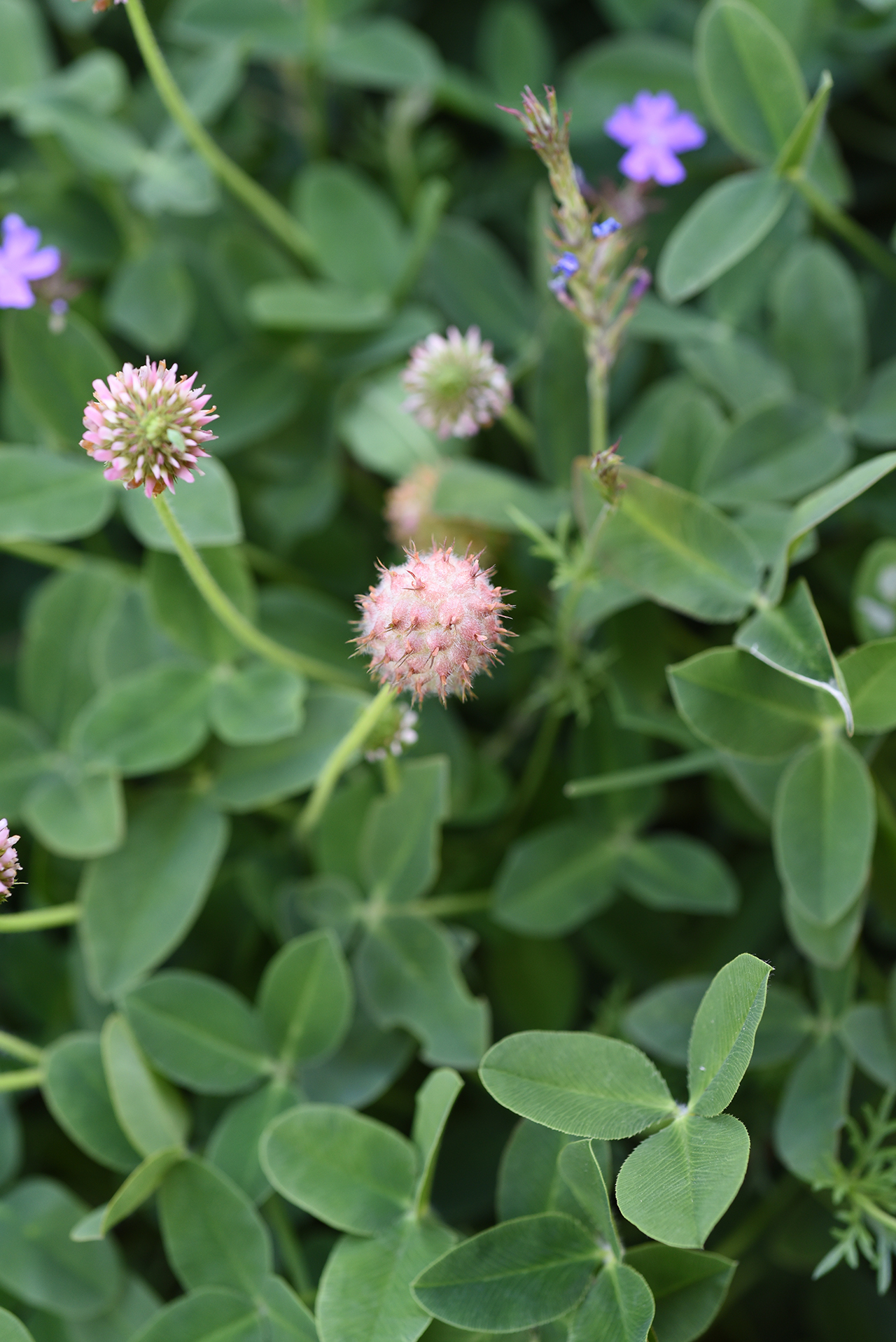
Great post! This is something that I’ve been playing with the past couple of summers. Believe it or not I had too much shade last summer with my shade cloth. I had tall lanky plants that never produced.
Bridget, thanks so much for your comment! I did the same thing with my mangoes – I put shade cloth on too early this year. I took it off and they pushed a bunch of new growth. So much is experimentation here in the desert!
Great tips! Can’t wait to try
Thank you Ryan!
Great tips. When searching for our home, my #1 priority was the size, microclimate of the yard, and exposure. Luckily we found the exact home we wanted (by we, I mean me, hubby just kinda went along with it…). West facing backyard with plenty of large trees. It was a clean slate aside from the trees so garden beds were put in according to exposure, same with trees. It gave me several years head start on my microclimate. I know the backyard isn’t exactly one’s priority when purchasing a home but I suggest to others looking, to at least take it into consideration if you’re looking to garden for a significant time as it greatly reduces all the headaches and frustration. I find a lot of gardening troubles I read in the desert happen because not only watering, soil and feeding, but the lack of a good microclimate! My motto in my garden is that location is everything. Everything is planted in a spot that tailors to every plant’s needs, exposure, watering, wind break and soil considered. And all of these are always affected by microclimate.
Thank you Sandra. Completely agree. Your garden is amazing. We see all the lovely harvests you post. Is also why I love working with gardeners, as a realtor I can advise them and help them with the yard aspect too.
Thank you for the tips! As a first time gardener I’ve been nervous about the Arizona summer. As far as the list of plants that are ok to be planted in June, would it be better to plant in pots or is it ok to plant in ground?
Either one is fine. The trick is large pots and lots of mulch. Always lots of mulch. Tepary beans won’t do well in a pot. They need to go in the native soil. You have made fantastic progress, don’t be nervous.
Great post. Answered a lot of things I have been mulling over.
Thank you Shu-Shu, and congrats on the picture of your cats being featured.